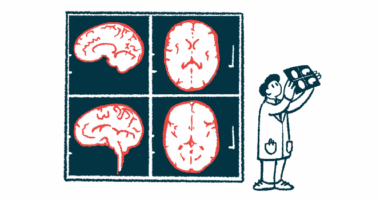Finding hope as my teen with NMOSD joins a trial for Enspryng
Looking forward to the next chapter in my daughter's treatment journey

The past few years have been challenging for me, my family, and especially my youngest daughter, Bella, who in 2017 was diagnosed at 9 years old with neuromyelitis optica spectrum disorder (NMOSD). At the time, the best course of therapy recommended by Bella’s neurologist was Rituxan (rituximab).
Back then, Bella’s condition was so grave that her doctors and I weren’t sure she would survive. We lived minute to minute and hour to hour for several weeks. I had no idea of the journey that lay ahead of us, much less how to choose the best treatment for her. All that mattered to me was that Bella had the chance to live and get better, so we agreed to begin Rituxan.
Bella’s infusions started shortly after she received her diagnosis, and the difference was almost immediate. She has continued to receive treatment every six months for the past six years. Overall, Bella has remained healthy, but a little over two years ago, her doctors became concerned that her B-cells were becoming too depleted from the infusions.
After a few months of monitoring, Bella’s team decided to begin a monthly infusion of intravenous immunoglobulin (IVIG) therapy to improve her chances of fighting off infections. While the IVIG is working, Bella is in high school and misses a significant amount of school due to illnesses, appointments, and infusions.
Taking advantage of a new option
During a recent visit with her neurologist, Bella’s treatments and infusions were top of mind. Through research and discussions with others in the NMOSD community, I learned that a treatment called Enspryng (satralizumab-mwge) is being trialed in adolescents with the disease. The neurologist has offered Bella the opportunity to receive the therapy as part of a clinical trial.
Enspryng is currently approved to treat adult NMOSD patients who are aquaporin-4 antibody positive. The drug comes in a pre-filled syringe that the patient self-injects once a month. Bella was on the fence about giving herself an injection, but I promised I’d take on the responsibility until she’s comfortable doing it herself. After all, she just got used to having an IV inserted without me holding her hand in support.
My discussion with Bella’s neurologist gave me hope. While we are grateful for Rituxan and all it’s done for Bella, its efficacy and side effects have caused some concern. Enspryng has proven to be safe and effective for adult NMOSD patients, so I’m hopeful Bella will experience the same results. Of course, changing treatments raises concerns about a relapse, but I was reassured to learn that in trials, Enspryng prevented relapses long term.
Bella’s doctors and I have agreed to get things moving with Enspryng in the fall. Her neurologist informed me that treatment will begin around the time Bella would be due for her next Rituxan infusion, to ensure that most of the Rituxan is out of her system before she begins the new therapy. I was also surprised to learn that once Bella has been on Enspryng for a while, her need for monthly IVIG therapy will decrease. This will give Bella more time in school and more freedom to enjoy her life.
Bella and I are greatly reassured by the support of her doctors. We all work as a team, discuss research, have time to ask questions, and create a plan of action for Bella’s care. Without their support and communication, our NMOSD journey would be a lot more challenging and uncertain. For now, we are hopeful for the future and excited to begin our Enspryng journey.
Note: Neuromyelitis News is strictly a news and information website about the disease. It does not provide medical advice, diagnosis, or treatment. This content is not intended to be a substitute for professional medical advice, diagnosis, or treatment. Always seek the advice of your physician or other qualified health providers with any questions you may have regarding a medical condition. Never disregard professional medical advice or delay in seeking it because of something you have read on this website. The opinions expressed in this column are not those of Neuromyelitis News or its parent company, Bionews, and are intended to spark discussion about issues pertaining to neuromyelitis optica spectrum disorder (NMOSD).







Leave a comment
Fill in the required fields to post. Your email address will not be published.